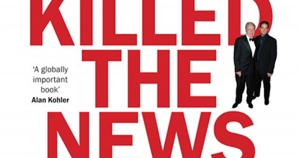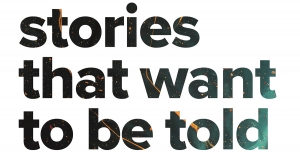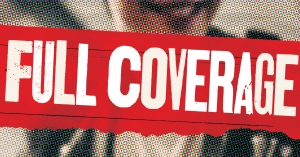Journalism
Ruth Balint reviews ‘The Holocaust and Australian Journalism: Reporting and reckoning’ by Fay Anderson
‘The Nazis are coming, Hurrah! Hurrah!’ wrote an excited young journalist, Ronald Selkirk Panton, to his parents the same month that Adolf Hitler was elected chancellor of Germany, the same month that Dachau was created, and the same year that the racial laws against Jews and other minority groups were enacted. Panton was one of a small but enthusiastic cohort of Australian journalists who went to Europe and filed stories about the Nazi dictatorship and the persecution of Jews. Most did not share Panton’s admiration for Hitler. Indeed, as Wilfred Burchett, one of the more political among them, later recalled, he found journalism about Hitler and Nazism elusive in Australia, amid ‘horrifying distortions’ of Hitler as a ‘man of peace’.
... (read more)Bridget Griffen-Foley reviews ‘The Men Who Killed the News: The inside story of how media moguls abused their power, manipulated the truth and distorted democracy’ by Eric Beecher
Media owners and enablers, autocrats and charlatans, henchmen and underlings, midshipmen and first mates, hangers-on and frenemies populate this book. The Men Who Killed the News is about media moguls over the past 150 years, with the occasional grand-mogul and even anti-media mogul (see Silvio Berlusconi) thrown in.
... (read more)Theodore Ell reviews ‘Stories That Want To Be Told: The Long Lede anthology’ by Arlie Alizzi et al.
Stories That Want To Be Told is an oddly flat title for this stimulating anthology. Most of its contents are stories that need to be told. Even those that do not quite succeed in becoming more than their authors’ ‘passion projects’ are likely to leave readers better informed and more curious about little-known facets of today’s world.
... (read more)Des Cowley reviews ‘Fat Chance: Journalism poems’ by Kent MacCarter
Fat chance. A million to one. Buckley’s. We’ve all come across bizarre tales of survival that defy belief. Take the case of sixty-year-old Hiromitsu Shinkawa, found floating ten miles out to sea, clinging to the roof of his house, days after a tsunami wiped out his home town in the Fukushima prefecture of Japan in 2011. What were the odds?
... (read more)Des Cowley reviews 'Full Coverage: A history of rock journalism in Australia' by Samuel J. Fell
In the film Almost Famous (2000), director Cameron Crowe’s alter ego, fifteen-year-old William Miller, doggedly pursues his dream of breaking into rock journalism. He cold-calls legendary music journalist Lester Bangs (marvellously played by a dishevelled Philip Seymour Hoffman). Next thing we know, he is commissioned by Rolling Stone editor Ben Fong-Torres to head out on the road with fictitious band Stillwater to write a story that ends up on the cover of Rolling Stone. If only it were that easy.
... (read more)Justice Anthony Besanko’s dismissal of Ben Roberts-Smith’s defamation proceedings against a trio of mastheads – The Age, The Canberra Times, and The Sydney Morning Herald, at the time all owned by Fairfax – was a comprehensive victory for those newspapers. It was a vindication of their serious investigative journalism on matters of high public interest. And it was a devastating blow to the reputation of Roberts-Smith.
... (read more)Patrick Mullins reviews 'Media Monsters: The transformation of Australia’s newspaper empires' by Sally Young
In 1968, Rupert Murdoch was one step from acquiring his first international media holding, in the British tabloid The News of the World. That Murdoch was so close was a personal coup, given that his press ownership had begun sixteen years earlier with a much-diminished inheritance, largely based in Adelaide. To pull off the News of the World acquisition, however, Murdoch needed government approval to transfer $10 million Australian offshore. Speed, secrecy, and surety were pivotal, and in search of all three Murdoch went to John McEwen, the deputy prime minister and leader of the Country Party. The two had an enduring bond: McEwen had helped Murdoch buy his grazing station and family bolthole, Cavan, and when McEwen was appointed acting prime minister after the death of Harold Holt in 1967, Murdoch had argued in The Australian that McEwen should be prime minister in his own right. Now, in 1968, McEwen took Murdoch to the prime minister, John Gorton, who was also familiar with the young press baron. Gorton had briefly been lined up to work for Murdoch’s father in the 1930s and owed something of his present job now to the influence Murdoch had wielded when it became clear that McEwen could not remain prime minister.
... (read more)Bridget Griffen-Foley reviews 'Bold Types: How Australia’s first women journalists blazed a trail' by Patricia Clarke
After she left journalism, Patricia Clarke turned to researching and writing books, beginning with The Governesses in 1985. Bold Types is her fourteenth book. The Canberra writer was a familiar figure at media history and other conferences, and in the National Library of Australia reading rooms, until Covid-19 at least. Her books, augmented by dozens of articles and conference papers, focus mainly on the lives, careers and letters of Australian women, especially writers and journalists. Clarke also writes about the history of her city, Canberra, an interest reflected in some of the fourteen entries she has produced for the Australian Dictionary of Biography. The ninety-six-year-old has devoted nearly ‘half a lifetime’ (to borrow the title of one of her tomes, about Judith Wright) to historical endeavours.
... (read more)Gemma Nisbet reviews 'Upheaval: Disrupted lives in journalism' edited by Andrew Dodd and Matthew Ricketson
If you have even a passing interest in the state of the Australian media, you may have come across the estimate that between four and five thousand journalism jobs were lost nationally in the past decade. This estimate suggests the scale of an industry-wide crisis in which successive rounds of redundancies became a feature of life in many newsrooms as media organisations turned to cost-cutting in their struggle to adapt to a rapidly changing landscape. The figure, which originated from the journalists’ union, the Media Entertainment and Arts Alliance, also points, albeit more obliquely, to the human impact of such cultural changes and the thousands of distinctive individual experiences that such numbers can elide.
... (read more)Jane Cadzow reviews 'Breaking News: The remaking of journalism and why it matters now' by Alan Rusbridger
When Alan Rusbridger was a young journalist on the Cambridge Evening News, he fell in love with a university leturer. One night, after they moved in together, there was a knock on their door. A reporter and photographer from the Sunday Mirror wanted to tell the story of their romance to the four million people who ...
... (read more)









